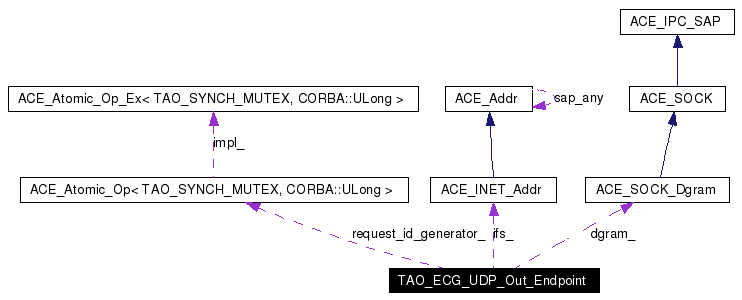
#include <ECG_UDP_Out_Endpoint.h>
Collaboration diagram for TAO_ECG_UDP_Out_Endpoint:

Public Member Functions | |
| TAO_ECG_UDP_Out_Endpoint (void) | |
| Constructor. | |
| ~TAO_ECG_UDP_Out_Endpoint (void) | |
| Constructor. | |
| ACE_SOCK_Dgram & | dgram (void) |
| CORBA::ULong | next_request_id (void) |
| Obtain the next request id. | |
| CORBA::Boolean | is_loopback (const ACE_INET_Addr &from) |
Private Attributes | |
| ACE_Atomic_Op< TAO_SYNCH_MUTEX, CORBA::ULong > | request_id_generator_ |
| The request id.... | |
| ACE_SOCK_Dgram | dgram_ |
| The datagram.... | |
| u_short | port_number_ |
| size_t | if_count_ |
| ACE_INET_Addr * | ifs_ |
UDP senders can share a single endpoint to send UDP packets, but there is more state associated with this endpoint than its datagram SAP; for instance we need to keep track of the request id.
|
|
Constructor.
|
|
|
Constructor.
|
|
|
Obtain the datagram associated with this endpoint. Clients of this class must open, and register (if necessary) this datagram. |
|
|
The endpoint can detect if a data-gram was sent by itself, this is useful to ignore or remove messages sent by the same process. |
|
|
Obtain the next request id.
|
|
|
The datagram....
|
|
|
Keep the list of local interfaces, needed for the is_loopback method. |
|
|
|
|
|
Cache the port-number so we can quickly determine if an event is coming from another endpoint. |
|
|
The request id....
|
 1.3.9.1
1.3.9.1